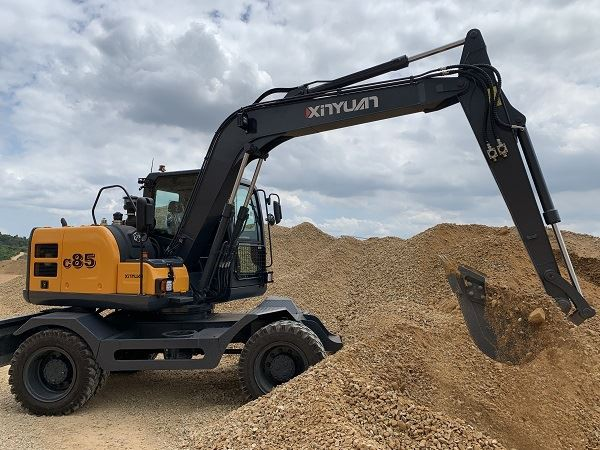When the excavator is operating, the driver pulls the pneumatic control valve and the suspension cylinder cannot be locked, so the excavator is unstable.
1. Cause analysis: the suspension oil cylinder is a one-way plunger oil cylinder. When the excavator is driving, the distribution valve makes the oil circuits of the two oil cylinders and the oil tank communicate and float, so as to improve the balance of the excavator during driving. During the operation of the excavator, open the hand operated air valve, and the compressed air enters the control cylinder to make the piston push the distribution valve of the suspension cylinder to move the slide valve, so as to close the oil circuit of the two suspension cylinders and make them disconnected from each other. At this time, the suspension cylinder is rigidly connected with the front axle and frame, which ensures the stability of the excavator during operation. If the locking does not work during excavator operation, it may be that there is air in the suspension cylinder to the distribution valve or the slide valve of the distribution valve is in the wrong position, and the oil circuits of the two suspension cylinders are not closed, so that the oil circuits of the two suspension cylinders are still in the interworking state without locking.
2. Diagnosis and troubleshooting
(1) Check that the engine of the air pressure control system is in the flameout state and the air pressure gauge indicates that the air pressure is sufficient. At this time, pull down the hand control air head of the suspension cylinder. If you hear a serious air leakage sound, it indicates that the air pressure pipeline leaks and the suspension control cylinder does not act, resulting in the slide valve not in place. If there is no air leakage, pull up the hand and operate the air to the original position, and listen to whether there is exhaust sound. If there is no exhaust sound, it indicates that the blocked air circuit of the control cylinder (control air and water condensation in winter) is the reason for the non locking of the suspension cylinder, which should be eliminated.
(2) Check the valve rod of the distribution valve of the suspension cylinder, remove the connecting lock of the push rod of the control cylinder, and push the distribution valve rod by hand. If the locking of the suspension cylinder is effective, it indicates that the push rod is improperly adjusted and should be adjusted.
(3) Remove the air from the suspension cylinder. If the oil leakage from the suspension cylinder or plunger is observed, it can be suspected that there is air in the cylinder. It does not play a rigid connection role in the locked state, and the air in the oil should be removed. The exhaust method: use the working device to excavate the shovel head to support the front, keep the front wheel off the ground, loosen the vent plug on the oil cylinder, swing the front wheel up and down around the hinge pin until the exhaust port overflows oil, and then screw it in after exhaust.

